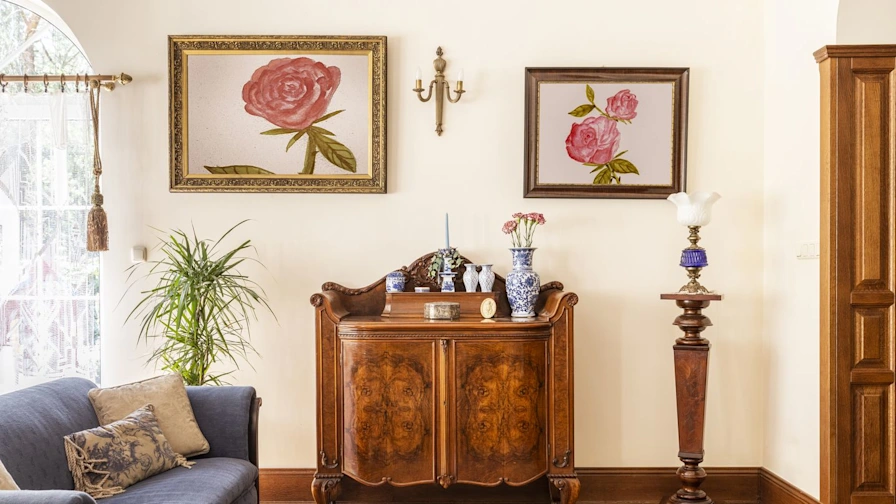As temperatures soar during a heat wave, keeping your home cool becomes a top priority. While air conditioning is the most effective solution, it can also be expensive and environmentally taxing. Fortunately, there’s a simple, budget-friendly decorating trick that can help lower indoor temperatures naturally: strategic use of light-colored and reflective decor.
This method leverages the science of heat absorption and reflection to create a cooler living space. By making a few smart changes to your home’s color scheme and materials, you can reduce heat retention and enjoy a more comfortable environment without over-relying on AC.
How Light Colors and Reflective Surfaces Keep Your Home Cool
Dark colors absorb more heat, while light colors reflect it. This principle applies not only to clothing but also to home decor. When sunlight enters a room, dark furniture, walls, and flooring trap heat, making the space feel warmer. On the other hand, light-colored surfaces bounce sunlight away, helping maintain a cooler temperature.
1. Paint Walls in Light, Reflective Shades
One of the easiest ways to cool your home is by choosing light paint colors for walls and ceilings. Opt for:
-
Whites and off-whites (e.g., eggshell, cream)
-
Soft pastels (e.g., light blue, pale green)
-
Neutral tones (e.g., beige, light gray)
High-gloss or satin finishes can further enhance reflectivity, whereas matte finishes absorb more heat. If you’re not ready to repaint an entire room, consider an accent wall in a cooling shade to help reduce heat buildup.
2. Use Light-Colored Curtains and Blinds
Heavy, dark drapes can turn windows into heat magnets. Instead, choose:
-
Sheer white curtains – Allow light in while reflecting heat
-
Light-colored blackout curtains – Block sunlight without absorbing excess warmth
-
Reflective blinds or shades – Cellular shades or metallic blinds can deflect sunlight
For maximum cooling, keep curtains closed during the hottest parts of the day (usually between 10 AM and 4 PM).
3. Swap Dark Furniture for Light or Reflective Pieces
If your sofa, tables, or bed frames are dark, they may be contributing to heat retention. Consider:
-
Light upholstery (cream, beige, or light gray fabrics)
-
Glass or metallic furniture – These materials reflect rather than absorb heat
-
Light wood or wicker – Natural, light-toned materials stay cooler than dark woods
If replacing furniture isn’t an option, simply drape light-colored slipcovers or throws over dark pieces.
4. Choose Cooling Flooring Options
Floors can also impact indoor temperatures. Dark carpets absorb and retain heat, while light, hard surfaces stay cooler. Try:
-
Light-colored rugs (jute, sisal, or cotton)
-
Tile or stone flooring – Naturally cool and reflective
-
Light wood or laminate flooring – Warmer than tile but better than dark carpets
If you have dark floors, placing a large light-colored rug in high-traffic areas can help mitigate heat absorption.
5. Incorporate Mirrors and Reflective Decor
Strategically placed mirrors can bounce sunlight away from your home, reducing heat buildup. Consider:
-
Large mirrors opposite windows – Redirect sunlight back outside
-
Metallic decor (silver vases, chrome accents) – Helps reflect heat
-
Glossy finishes on furniture – Adds a cooling reflective effect
Additional Tips to Enhance This Cooling Effect
While light decor makes a big difference, combining it with other cooling strategies can maximize results:
-
Open windows at night – Let cooler air circulate naturally
-
Use fans wisely – Ceiling fans should rotate counterclockwise in summer to push air downward
-
Add indoor plants – Some plants, like aloe vera and snake plants, release moisture and cool the air
-
Avoid heat-generating appliances – Limit oven use; opt for grilling outdoors or microwave meals
Final Thoughts
You don’t need a major renovation or expensive cooling system to keep your home comfortable during a heat wave. By simply switching to light, reflective decor, you can significantly reduce indoor temperatures. Whether it’s painting walls a breezy shade, swapping dark curtains for light ones, or adding mirrors to deflect sunlight, these small changes make a big difference.
